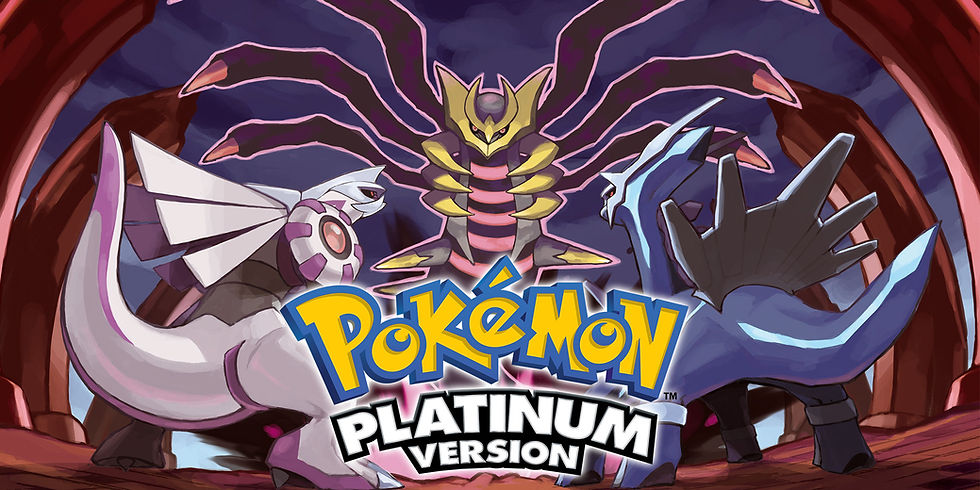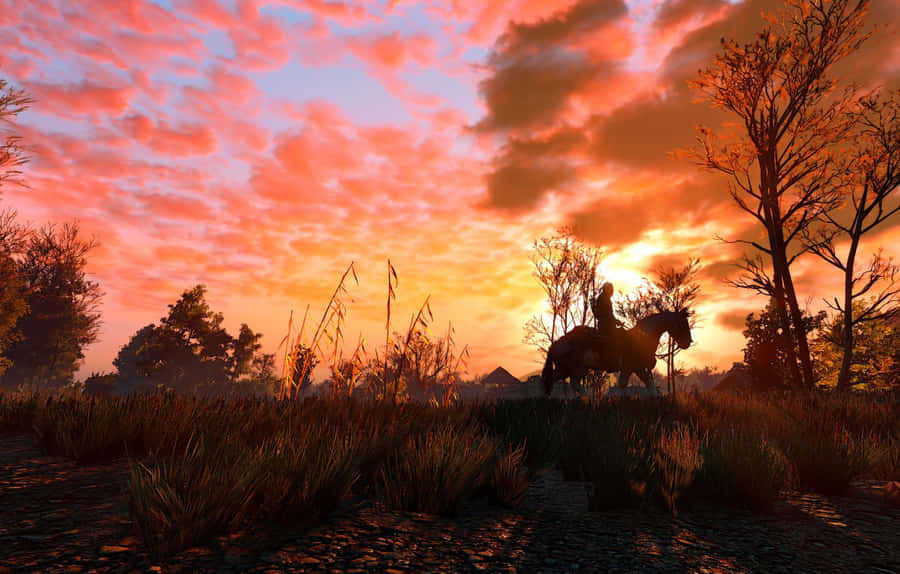Pokémon, The Living Dex and The Legacy of "Gotta Catch 'em All"
- Lewis Davies
- Apr 18
- 7 min read
I have been a Pokémon fan since I was able to hold a Game Boy Color. I loved its purple shell and the fact that it fit, mostly, in the palms of my 4 year old hands. But more than anything, I loved Pokémon. I still do. Your favourite Pokémon game is usually the one you played first, or at least remember playing first. My memories start with Platinum, which was released when I was around 8 years old. Even though I’ve probably replayed Pokémon Platinum every year since then, I haven’t attempted completing the pokédex since that first time.

Well, last year I started working on a ‘living’ pokédex - a collection that consists of one of every Pokémon. There are considerations when starting a challenge like this, such as ‘do you include form changes or gender differences as separate entries’? But even without the extras, there are now 1025 Pokémon to collect, which is well over double the 493 I had to contend with back in Pokémon Platinum. This makes catching them all a daunting task - but more importantly, it makes it one that exists outside of any one Pokémon game. That high of a total means that newer Pokémon games rarely contain every Pokémon. In 2020, The Pokémon Company released Pokémon HOME - a cloud storage system that allows you to transfer Pokémon from game to game, or just store them for later. However, not all Pokémon can be transferred to all games - Scarlet and Violet’s lack of national dex, for example, means that some, like Tangela and Wooloo, are unobtainable in those games.
This highlighted two frustrations for me as I turned to older games for my living dex: while Pokémon’s tagline (as far as I can tell) is still “Gotta Catch ‘em All”, the games, now more than ever, do little to incentivise this and at times it feels completely separate from the rest of the core design. And, while Scarlet and Violet are the first truly open world Pokémon games, they end up relying on that “Gotta Catch ‘em All” legacy, and the enduring love of its characters to motivate exploration and collection.
I actually really like the Pokémon HOME app. Having all my Pokémon in the same place is the goal of a living dex and it provides an easy hub location to sort and store my guys. But I can’t help but feel that separating the collection from the process of collecting is the latest in the erosion of collecting Pokémon as a key facet of gameplay. I would go as far to argue that Pokémon has never gone far enough to really push the catching system like they do the battling one, but for now I’ll just stick to ‘it’s gotten worse’.

A good example of what I’m talking about are Hidden Machines, or HMs. HMs are items that contain special moves to teach your Pokémon that, once you obtain the right gym badge, allow you to interact with parts of the world to access new areas. They’re all fairly self explanatory; Cut allows you to cut down little trees that block your path and Rock Climb allows you to scale large cliffs. These blockades are a way for the game to highlight areas of importance, and ones you should come back to later - a way of stopping the player feeling totally lost, but also letting them feel like they’re driving the discovery of new areas. More than being ‘field moves’ though, they were a mechanical encouragement to use a variety of different Pokémon. Some of the HM moves are on the weaker side, so many players won’t be too happy about ruining their perfect Bidoof by teaching it rock smash. This, I believe, is a subtle/not-so subtle way for the games to push the player into exploring the different Pokémon on offer, and engage more in the collecting side of the games - something that removing the HM requirements in later games diminishes. Without them, I feel that the world becomes less interesting, and less discoverable.
Games like Breath of The Wild motivate their exploration through rewarding the player’s curiosity - with shrines, combat or just great views. I feel like Pokémon Scarlet and Violet are motivated by nostalgia, in a way. The world doesn’t drive exploration more than the want to find your favourite Pokémon within it does, I feel. This isn’t inherently bad, but I would love to see a Pokémon game motivated by surprise and discovery, rather than largely known quantities. The new Pokémon do help, but It’s not enough to feel like the open world does anything to further the Pokémon formula, for me.
Exploration isn’t the only way they’ve encouraged seeing more Pokémon, though. Back in the day, Professor Oak would send out his lab assistant to check your pokédex progress - if you’d collected enough of them you’d be rewarded for your troubles. This, however, was only really a thing in the Kanto games. You’ll occasionally receive rewards from the professor’s assistant in later games - in Pokémon Diamond, Pearl and Platinum you can receive the EXP. Share for registering 35 Pokémon in the pokédex - but they never really take this past its original idea and many of the later games outright remove it completely.
I say many, and not all, here because Scarlet and Violet do include some attempts to reward the player for pokédex milestones. These unlock as you catch more and more Pokémon, and will give you rewards like evolution stones, pokeballs and sellable items. It’s nice to see them return all these years later, but it feels strange that they’re unchanged and now exist inside a menu, as opposed to being physically tied to whether you can find the professor's assistant. It regularly feels like Pokémon is making decisions about the pokédex and catching Pokémon that present them as though they were an afterthought. The rewards system has arguably gone backwards and catching seems to have stagnated. Except, that is, in the case of Legends Arceus.

Pokémon Legends Arceus is the closest thing to a game about catching Pokémon as I feel we’ve come. There’s a battle system, sure, but, unlike mainline Pokémon games, the catching system is the star here. As you catch Pokémon, they get added to your research notes along with a list of challenges to complete that, as you do, increase your research level for that Pokémon. It’s one of the few ways that the Pokémon franchise has tried to incentivise catching Pokémon as a key progress marker. It’s not perfect, but with the research levels being tied to your character’s level - and, in turn, your ability to craft better and better pokeballs - it works well enough.
A similar mission system is present in The Indigo Disk DLC for Pokémon Scarlet and Violet, at least somewhat. In the DLC you are given “Blueberry Quests” (BBQs) to gain Blueberry Points (BP) that can be used to, among other things, increase the variety of Pokémon that can spawn. I like this idea in theory, but I feel like it suffers from a lack of tactility in the catching mechanic. Seeing the numbers go up on your cache of BP never feels as satisfying to me as it could, because catching Pokémon requires little thinking or planning. In Legends Arceus, you’re aiming the pokeballs, luring the Pokémon with snacks, and even getting bonuses for catching them off guard. It makes catching Pokémon feel like something you have to work for, and get better at. But In Scarlet and Violet you’re back to performing a catching ritual that has gone largely unchanged since its initial inception - lowering HP, maybe inflicting a status ailment, and throwing your best ball. It's not a terrible system, but I don’t think just rewarding the player for the number of Pokémon caught is enough. When you engage in trainer battles, getting to put your strategies to the test is a large part of the fun (any qualms about Pokémon’s difficulty notwithstanding). Engaging with the catching mechanics should stand as their own reward alongside the pokédex.
Now, I’m not saying the Legends Arceus approach is the only solution. The Pokémon games do a great job at adding layers of complexity to the battle system without upending it entirely - the physical/special split and mega evolution come to mind. The safari zone/great marsh is a great example of this in regards to the catching system. It feels like a precursor to Legends Arceus without needing to rebuild the whole system. You can throw bait or mud to affect the chance of catching the Pokémon, and the chance of it fleeing. But, like many other aspects of Pokémon aimed at pushing engagement with its catching systems, the Safari Zone/Great Marsh is absent from the later Pokémon games. It feels like it would fit well in an open world setting - but only the biome features of the safari zone are carried over to Scarlet and Violet, while the features that made it an interesting catching experience are, like HMs, stripped away.

Okay, so I’ve been pretty harsh on what is clearly an enduring system. Catching remains unchanged because, at its core, it does work. But Pokémon has so much potential to do more than just work. Legends Arceus, and even some of Scarlet and Violet, are a testament to that. The desire to collect Pokémon has withstood the test of time due to the worldwide appeal of its characters, but imagine what could be: if the enduring nature of “Gotta catch ‘em all” was also bolstered by its systems, and world design. Legends ZA is on its way this year, and it looks to be incorporating that aim and throw catching system into its gameplay. Hopefully they take the opportunity to really incentivise engagement with that system, and it isn’t drowned out by the snazzy new real-time-ish combat system.



